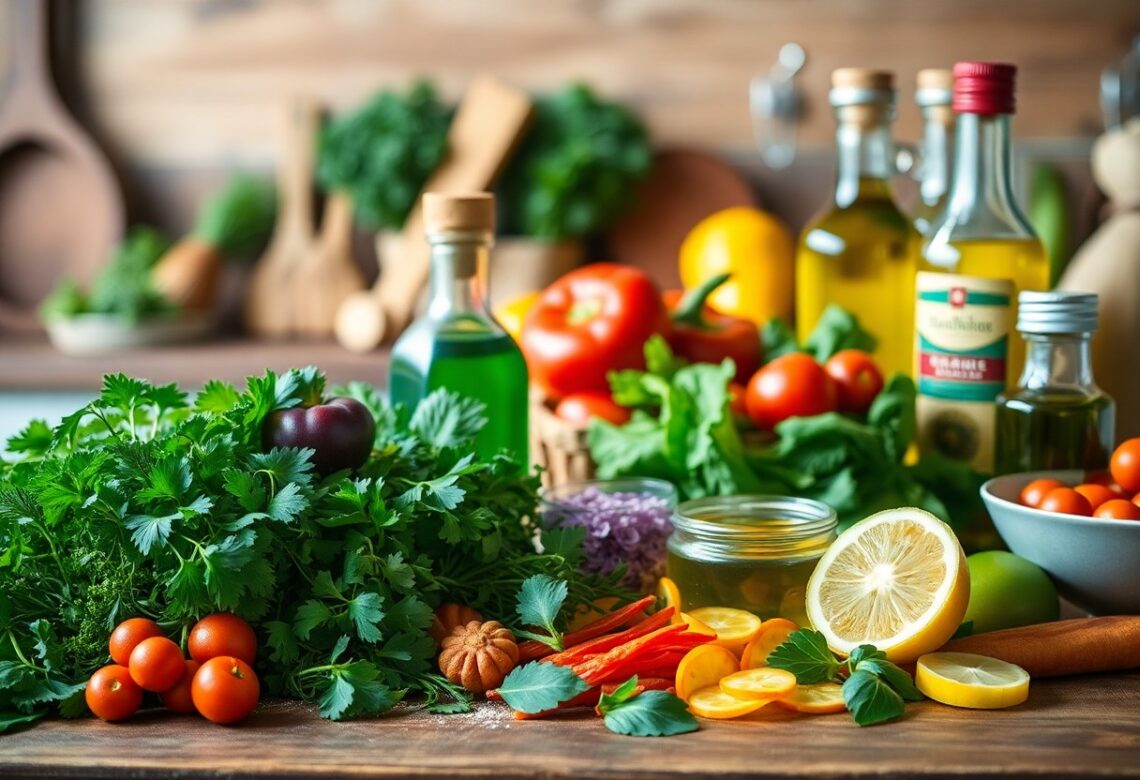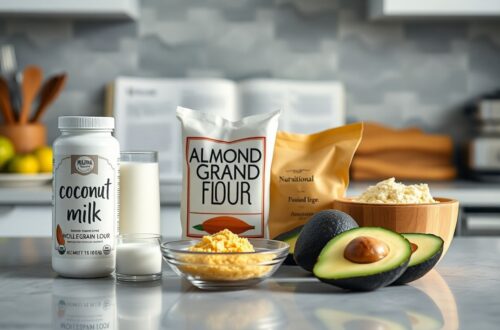Just because you’re focusing on healthy eating doesn’t mean you have to sacrifice flavor in your meals. You can elevate your dishes by mastering techniques that enhance taste without relying on excessive salt, sugar, or unhealthy fats. In this blog post, you will discover various strategies to build and layer flavor, using fresh herbs, spices, umami-rich ingredients, and cooking methods that retain and amplify natural tastes. Prepare to transform your meals into healthy, yet flavorful feasts that satisfy your cravings and nourish your body.

Key Takeaways:
- Layering Flavors: Combine various ingredients at different stages of cooking to create depth and complexity.
- Utilizing Fresh Herbs: Fresh herbs can enhance taste significantly; add them towards the end of cooking for maximum flavor.
- Acidity Balance: Incorporating acids, such as citrus juice or vinegar, can brighten and enhance flavors in a dish.
- Spice Application: Use spices wisely; toasting them can unlock important oils that amplify their flavor.
- Quality Ingredients: Opt for high-quality, fresh ingredients as they naturally contribute better taste and health benefits.
- Cooking Technique: Different methods like grilling, roasting, or sautéing can alter flavor profiles, so choose techniques that enhance your ingredients.
- Mindful Seasoning: Season consistently throughout the cooking process to build a balanced flavor foundation.
Understanding Flavor Fundamentals
A deep understanding of flavor fundamentals is necessary for creating balanced and health-conscious dishes. The foundation of flavor lies in how you perceive taste and aroma, as well as how different ingredients can complement or contrast each other. By grasping these core concepts, you can enhance your culinary creations, making them not only delicious but also nutritious.
The Role of Taste and Aroma
Understanding taste and aroma is vital for successful flavor development in your dishes. Taste refers to the five basic sensations—sweet, salty, sour, bitter, and umami—that your taste buds detect. Aroma, on the other hand, involves the smell of your ingredients, which significantly impacts how you perceive flavors. Together, these elements create a multi-sensory experience, enhancing enjoyment and satisfaction in your meals.
Flavor Pairing Principles
Aroma plays a vital role in flavor pairing, as certain combinations elevate your dish’s overall taste profile. By understanding which flavors naturally complement or enhance one another, you can create well-rounded dishes that surprise and delight your palate.
Flavor pairing is all about finding connections among different ingredients. By exploring aromatic compounds and similar flavor profiles, you can mix and match ingredients that work harmoniously together. For example, combining sweet and salty elements can create a complex culinary experience, while ingredients sharing common flavor notes can enhance the overall taste. Embracing these principles will allow you to build layers of flavor that keep your meals exciting and satisfying.
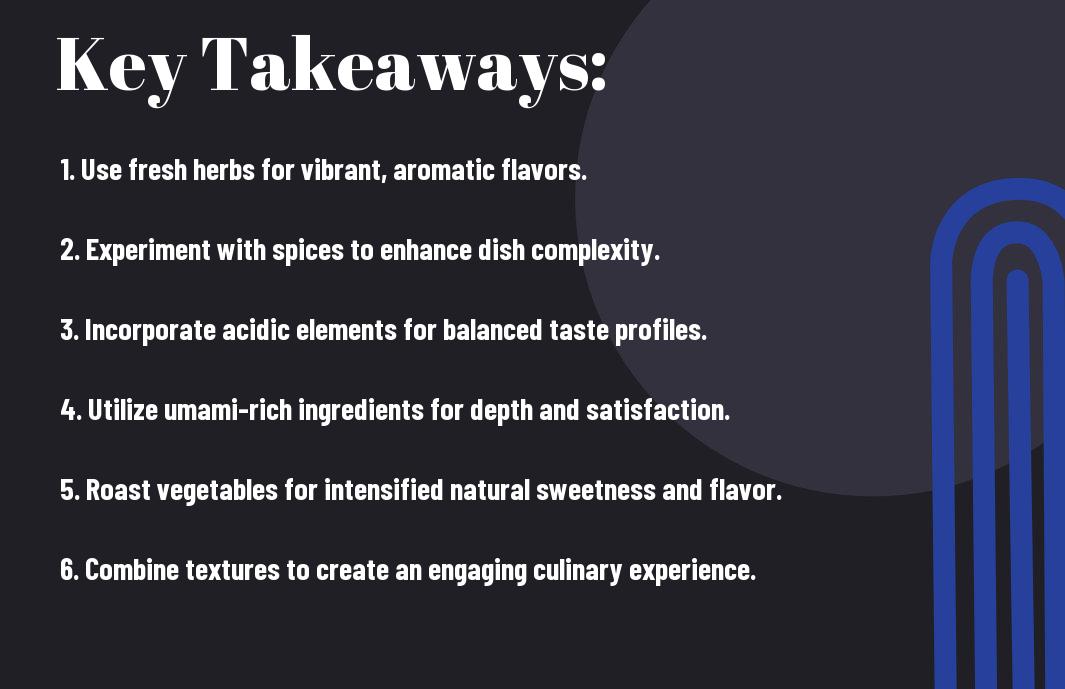
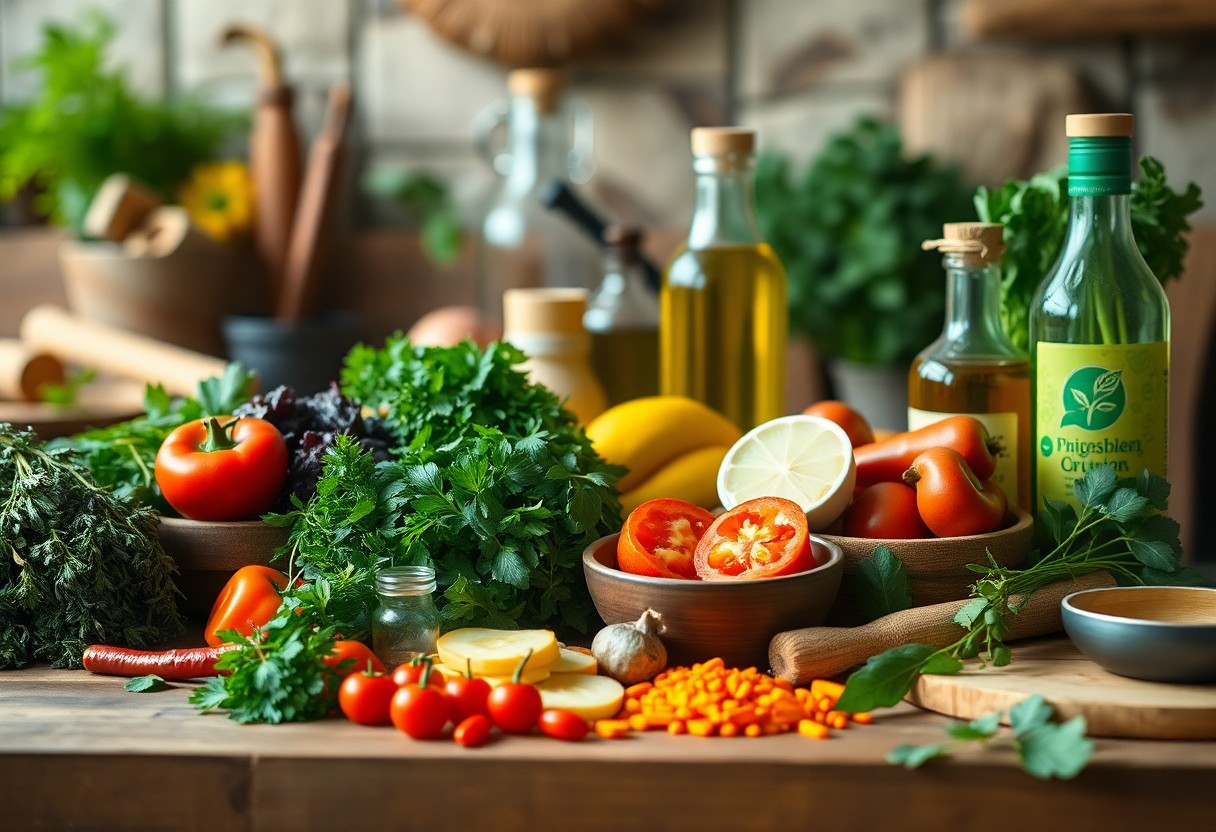
Utilizing Fresh Ingredients
There’s something inherently satisfying about cooking with fresh ingredients. The vibrant colors, appealing textures, and enticing aromas can elevate your dishes while providing imperative nutrients. By choosing seasonal and local fruits, vegetables, and proteins, you not only support your health but also enhance the flavor profile of your meals. Fresh ingredients often require less seasoning because their natural flavors shine, allowing you to create delicious, wholesome dishes without relying heavily on unhealthy additives.
Benefits of Seasonal Produce
Above all, seasonal produce offers peak flavor and nutrition. When you choose fruits and vegetables that are in season, you tap into their natural bounty at its best. This not only means more delicious meals but also more nutrient-rich ingredients, as they are harvested at their optimal ripeness. Furthermore, seasonal produce is typically more affordable and environmentally friendly, as it reduces transportation costs and emissions.
Herbs and Spices for Enhanced Flavor
On your culinary journey, incorporating herbs and spices can significantly boost flavor without unhealthy additives. Fresh herbs like basil, cilantro, and parsley can brighten your dishes, while spices like cumin, paprika, and turmeric add depth and warmth. These ingredients not only enhance taste but also pack a nutritional punch, providing various health benefits.
Fresh herbs and spices can genuinely transform your cooking. They allow you to experiment with flavor combinations and inspire creativity in the kitchen. Don’t shy away from trying new herbs and spices, as each one offers unique nuances that can take your meals to the next level. For instance, add fresh basil to a tomato salad for a burst of freshness or sprinkle some smoked paprika on roasted vegetables for an unexpected twist. By embracing the vibrant world of herbs and spices, you can turn simple dishes into flavorful experiences that nourish both body and soul.
Cooking Techniques that Enhance Flavor
All chefs know that the right cooking techniques can elevate your meals significantly. Techniques such as sautéing and grilling add depth and complexity, making your dishes more enjoyable. To learn more about making food “pop” with flavor the way restaurant food has, explore various methods that bring out the best in your ingredients.
Sautéing and Grilling
Behind every succulent dish lies the art of sautéing and grilling. These techniques not only cook your food quickly but also enhance its natural flavors. The high heat involved caramelizes sugars in your ingredients, leading to a delicious, golden brown crust that is irresistible.
Roasting and Braising
Cooking with roasting and braising transforms tough cuts of meat and hearty vegetables into tender, flavorful meals. These methods utilize dry and wet heat, respectively, to bring out the richness in your dishes. Roasting is especially effective in concentrating flavors and creating a pleasing texture, while braising allows for deep flavor infusion through prolonged cooking.
Roasting involves cooking your food in an oven, often at high temperatures, allowing the exterior to caramelize while locking in moisture. This technique works wonderfully for vegetables and meats alike, creating rich, robust flavors through the Maillard reaction. In contrast, braising combines hard cooking methods with liquid, resulting in melt-in-your-mouth tenderness that marries the flavors deeply. You’ll find that both methods complement each other beautifully, enhancing the overall dish with layers of taste.
The Importance of Acidity
After mastering the art of flavor building, understanding acidity’s role becomes key to brightening your dishes. Acidity not only enhances other flavors but also adds depth and complexity, making each bite more enjoyable. Incorporating acidic ingredients can elevate your cooking by balancing richness and cutting through heaviness, leading to well-rounded meals that excite your palate. Your dishes will come to life with intentional uses of acidic components, creating a harmonious blend that keeps flavors vibrant and fresh.
Balancing Flavors with Acidic Ingredients
With the right acidic ingredients, you can effortlessly balance flavors in your cooking. Ingredients like lemon juice, vinegar, and yogurt can transform a dish by providing necessary contrast to sweetness and richness. This enhancement helps achieve a more immersive eating experience by ensuring no single flavor overpowers another. Using acidity wisely will lead your dishes to have a harmonious and appealing profile that stands out.
Using Vinegars and Citrus Wisely
Wisely incorporating vinegars and citrus can elevate your meals dramatically. Each type of vinegar offers distinct flavor notes, ranging from the sharpness of white vinegar to the nuanced sweetness of balsamic. Citrus fruits like lemons and limes bring citrusy brightness, which can enliven dressings, marinades, and even desserts. Using these ingredients thoughtfully will allow you to add layers of flavor without overwhelming your dish, giving every meal a vibrant, fresh finish.
With careful attention, you can explore a variety of vinegars and citrus options that suit your palate. For instance, a splash of red wine vinegar can add depth to a hearty stew, while a squeeze of lime can brighten a fish taco. Experimenting with different combinations can help you discover the perfect balance for each recipe. Keep in mind to start with a small amount, gradually increasing until you achieve the desired level of acidity. This approach ensures you enrich your cuisine with engaging flavors while maintaining a healthy balance.
Building Umami in Healthy Dishes
Once again, you can enhance the savoriness of your healthy meals by focusing on umami-rich ingredients. Incorporating flavors from mushrooms, tomatoes, and fermented foods can elevate your dishes without compromising on health. These ingredients provide depth and a savory kick, ensuring your meals remain both nutritious and delicious. For more insights on enhancing your culinary skills, explore How to Make Healthy Food Taste Good.
Incorporating Mushrooms and Fermented Foods
Above all, mushrooms are a fantastic source of umami and can act as a meaty substitute in veggie dishes. By adding fermented foods like kimchi and miso, you’re not only infusing your meals with rich flavors but also boosting their health benefits through probiotics, making them enjoyable and gut-friendly.
Utilizing Nutritional Yeast and Seaweed
About nutritional yeast, it’s an excellent plant-based source of umami that adds a cheesy flavor to your dishes. Similarly, seaweed varieties like nori and dulse can bring a unique, savory taste while offering a wealth of nutrients like iodine and minerals. Together, these ingredients can revolutionize your cooking and help you create meals that are both wholesome and satisfying.
Also, nutritional yeast can easily be sprinkled on salads, soups, or popcorn to impart a delicious umami zing, making your meals more flavorful without extra calories. Seaweed can be added to broths or blended into smoothies to enhance the flavor profile seamlessly. Experimenting with these ingredients in your cooking will lead to new, exciting dishes that do not compromise on taste or nutrition.
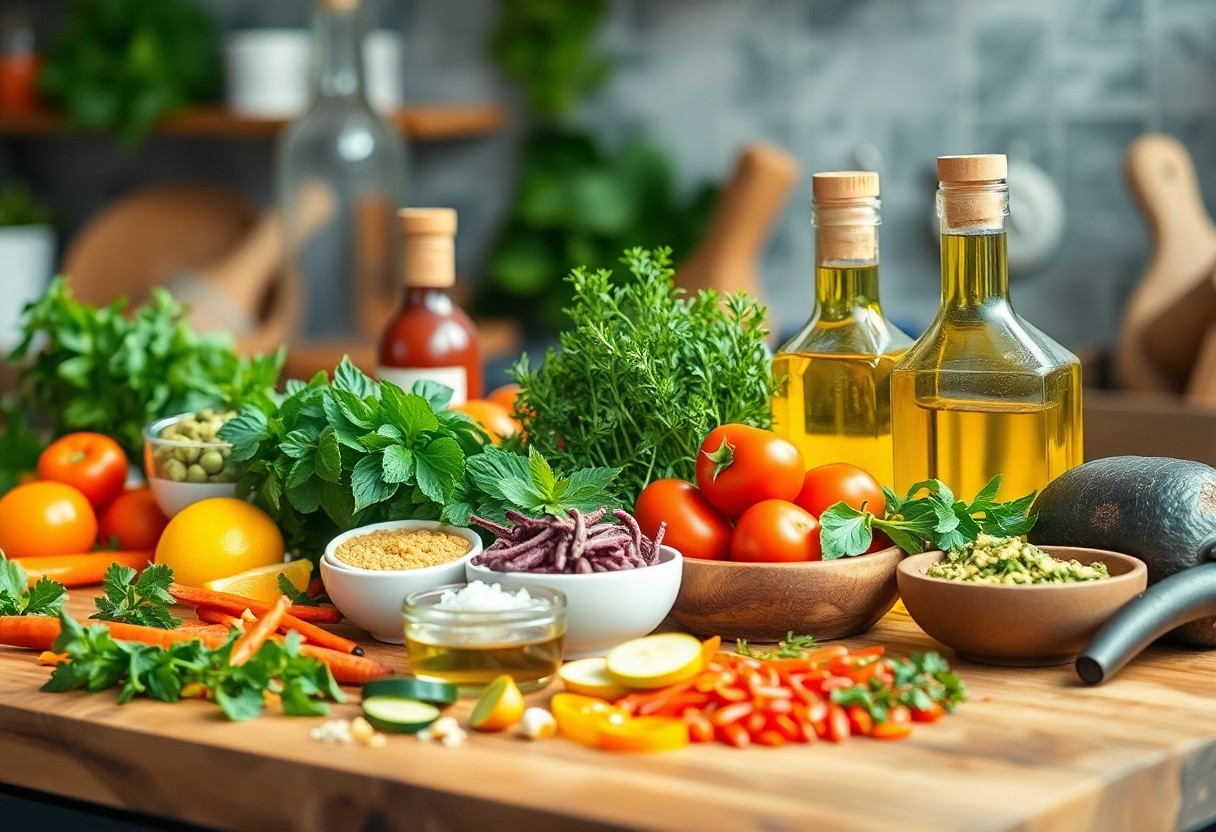
Healthy Substitutions for Traditional Flavor Enhancers
Despite common beliefs, you can enhance the flavors of your meals without relying on traditional seasoning heavyweights like salt or sugar. By exploring innovative alternatives, you’ll discover that flavor doesn’t have to come at a health cost. For instance, you can check out 10 ways to add flavour without salt to incorporate diverse spices and fresh ingredients that can elevate your dishes healthily.
Alternatives to Salt and Sugar
Enhancers like herbs, citrus juices, and vinegars can elevate your meals without the negative effects of salt and sugar. Utilizing ingredients such as garlic, ginger, or even nutritional yeast provides savory depth, while natural sweeteners like mashed bananas or pureed dates can satisfy your sweet cravings healthily.
Plant-Based Options for Creaminess and Depth
Before reaching for heavy creams or dairy, explore plant-based alternatives that offer both richness and complexity to your dishes. Ingredients like coconut milk, cashew cheese, or silken tofu can create a creamy texture without the saturated fats found in traditional options.
Indeed, incorporating plant-based options can transform the texture and flavor of your meals while boosting their nutritional profile. Ingredients like avocados, tahini, or blended nut butters not only add creaminess but also bring beneficial vitamins and healthy fats. By utilizing these ingredients, you enhance the flavor and ensure your meals remain wholesome and satisfying.
To wrap up
Now that you understand various healthy flavor building techniques, you can enhance your meals without sacrificing nutrition. By incorporating herbs, spices, citrus, and umami ingredients, you can create vibrant and satisfying dishes that delight your taste buds. Experimenting with different combinations will enable you to discover what works best for your palate, ultimately leading to a healthier and more enjoyable cooking experience. Embrace these methods to elevate your culinary skills and nourish your body with flavorful, health-conscious meals.
FAQ
Q: What are Healthy Flavor Building Techniques?
A: Healthy Flavor Building Techniques refer to a set of strategies used in cooking to enhance the taste of dishes while keeping health in focus. These techniques often emphasize the use of natural ingredients, herbs, spices, and low-fat cooking methods, allowing for a flavorful yet nutritious dining experience.
Q: How can I incorporate more herbs and spices into my meals?
A: Incorporating herbs and spices can be done by experimenting with fresh or dried varieties. Fresh herbs like basil, cilantro, and mint can be added to salads, soups, or sauces to elevate flavor. Additionally, spices such as cumin, paprika, and ginger can be introduced into marinades, dressings, or sprinkled over roasted vegetables to add depth and complexity.
Q: What are some low-fat cooking methods that enhance flavor?
A: Low-fat cooking techniques include steaming, grilling, poaching, and roasting. These methods allow the natural flavors of the ingredients to shine through without requiring excess fats. For example, roasting vegetables caramelizes their natural sugars, creating a rich taste without added oils.
Q: How can I build flavor in dishes without using salt?
A: Building flavor without salt can be achieved by using acidic ingredients like lemon juice or vinegar, which brighten flavors. Additionally, umami-rich ingredients such as tomatoes, mushrooms, or fermented products like miso can enhance the depth of flavor. Experimenting with different combinations will lead to satisfying results.
Q: Are there specific cooking techniques that improve the taste of healthy meals?
A: Yes, techniques like sautéing in small amounts of healthy oils, deglazing pans with broth or wine, and using a flavor base of aromatics (onions, garlic, and herbs) can significantly improve taste. Understanding the balance of flavors — sweet, salty, bitter, sour, and umami — can also elevate your dishes immensely.
Q: How do I make healthy meals more appealing and flavorful for picky eaters?
A: To cater to picky eaters, focus on presenting meals in a fun and visually appealing way. Incorporate bright colors through a variety of vegetables and use familiar flavor profiles while introducing new ingredients subtly. Gradually incorporate flavorful dips or sauces to provide familiar tastes with healthier bases.
Q: Can I use Healthy Flavor Building Techniques in meal prep? If so, how?
A: Absolutely! When meal prepping, consider batch cooking with flavorful bases, like homemade broth or sauces, infused with herbs and spices. Allowing meals to marinate overnight helps flavors develop. Storing meals in airtight containers can maintain freshness while enabling easy reheating of flavorful dishes throughout the week.
